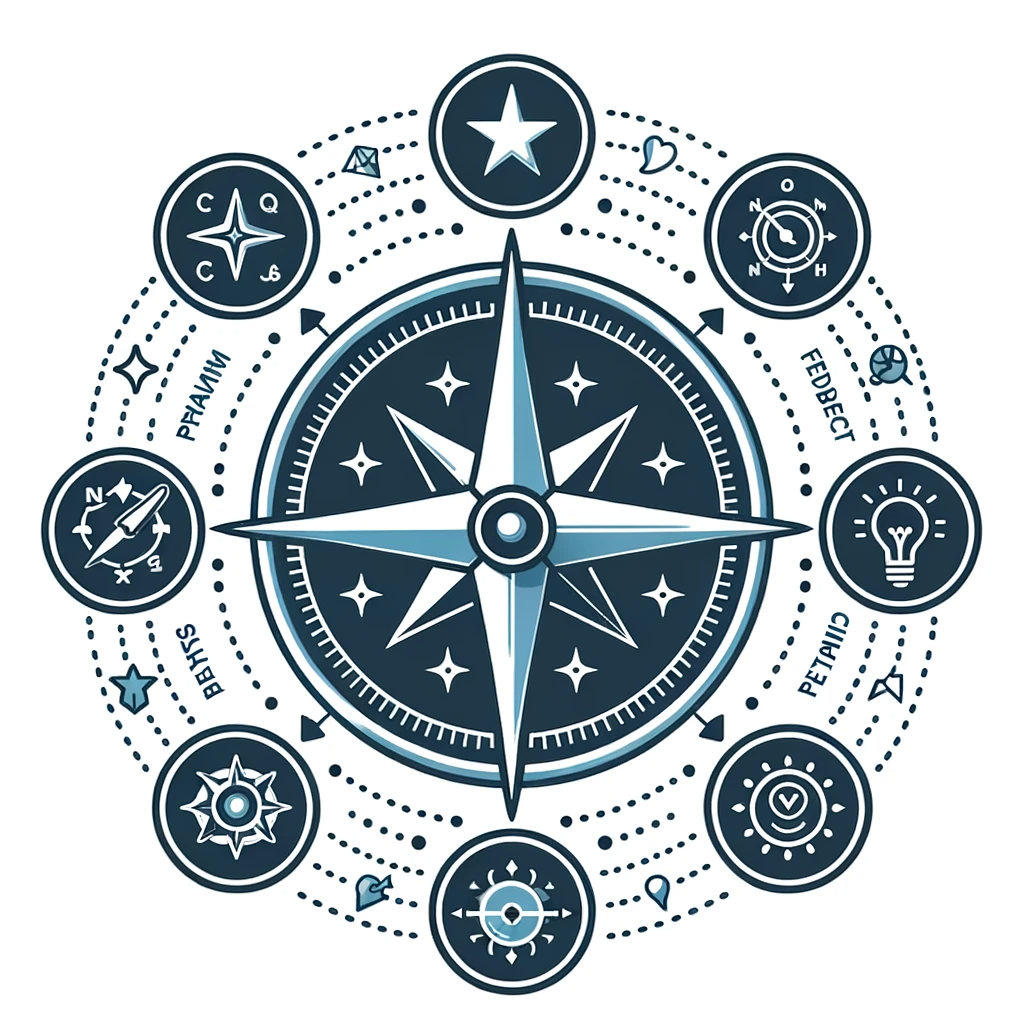In the ever-evolving landscape of product management, the role of business analysis and strategy cannot be overstated. These elements serve as the backbone for making informed decisions, optimizing resource allocation, and ultimately, ensuring the product’s success in the market. This comprehensive guide aims to serve as a roadmap for professionals in the field—Product Managers, Product Owners, and Heads of Product—by providing actionable insights and methodologies to navigate the complexities of business analysis and strategy effectively.
Consumer & Market Discovery: Knowing Why to Build
Before diving into product development, it’s crucial to understand the ‘why’ behind the build. This understanding starts with a deep dive into consumer and market discovery. The objective is to validate the problem you aim to solve and to ensure there is a market demand for your solution.
Methods for Consumer & Market Discovery
- Customer Interviews: One-on-one conversations with potential users can provide invaluable insights into their pain points, preferences, and expectations. These interviews can be structured or unstructured and can be conducted in-person or virtually.
- Surveys: Online surveys can reach a broader audience and can be particularly useful for quantitative analysis. Tools like Google Forms or SurveyMonkey can help in collecting and analyzing this data.
- Market Research: This involves studying existing data, trends, and competitors in the market. Reports from firms like Gartner, Forrester, and Statista can provide a wealth of information.
Importance of Validation
Consumer and market discovery is not just a box to tick off but a critical phase that helps in:
- Problem Validation: Ensuring that the problem you aim to solve is a genuine issue faced by a significant number of people.
- Market Fit: Understanding whether your proposed solution fits into the current market landscape or creates a new market altogether.
- Resource Allocation: Knowing the market size and consumer demand helps in allocating resources more efficiently, be it time, money, or manpower.
By rigorously following these methods, you set the stage for identifying opportunities that are not just viable but also profitable. It’s the first step in a journey that transforms an idea into a product that meets market demand and consumer expectations.

Identify Opportunities: Is the Opportunity Big Enough?
Once you’ve validated the problem and understood the consumer and market landscape, the next step is to identify whether the opportunity is big enough to warrant investment. Assessing the market size and growth potential is crucial at this stage.
Tools for Market Assessment
- Total Addressable Market (TAM): This represents the entire revenue opportunity that exists within the market for the product. TAM answers the question, “How big is the opportunity?”
- Serviceable Available Market (SAM): This is the segment of the TAM that your product can actually serve, considering various constraints like geographical reach and distribution channels.
- Serviceable Obtainable Market (SOM): This is the portion of SAM that you can realistically capture. SOM is often used for short-term planning and gives a realistic target for revenue generation.
Guidelines for Evaluation
- Market Growth: Look for markets that are not just large but also growing. A growing market offers the opportunity for scalability.
- Competitive Landscape: Assess the number of competitors and their strengths. A crowded market may require significant resources to gain a foothold.
- Regulatory Environment: Understand any legal or compliance barriers that could affect market entry or scalability.
- Profit Margins: Consider the potential for profitability, not just revenue. High revenue in a low-margin market may not be as attractive as moderate revenue in a high-margin market.
By carefully evaluating these factors, you can determine whether the opportunity is worth pursuing, thereby informing your business strategy and resource allocation.
Business Modelling: Can We Generate a Profit?
After identifying a worthwhile opportunity, the next step is to figure out how to monetize it. This involves choosing an appropriate business model and understanding key financial metrics.
Types of Business Models
- Subscription Model: Customers pay a recurring fee to access the product or service.
- Freemium Model: Basic features are free, but advanced features require payment.
- Direct Sales Model: Products are sold directly to customers without intermediaries.
- Marketplace Model: A platform that connects buyers and sellers, taking a commission from each transaction.
Key Financial Metrics
- Unit Economics: Understanding the direct revenues and costs associated with a particular business model. This includes metrics like Average Revenue Per User (ARPU) and Cost to Serve.
- Lifetime Value (LTV): The total revenue a company expects to earn from a customer throughout their entire lifetime.
- Customer Acquisition Cost (CAC): The cost incurred to acquire a new customer.
Sustainability
- LTV to CAC Ratio: A ratio greater than 3 is generally considered good and indicates that the business model is sustainable.
- Profit Margins: Ensure that the business model allows for healthy profit margins.
- Cash Flow: Positive cash flow is essential for sustainability, especially for startups and small businesses.
By understanding and applying these business models and financial metrics, you can create a robust and sustainable business strategy.
Product Vision & Strategy: Do We Have a Clear Path to Product/Market-fit?
Creating a product that resonates with your target audience requires more than just identifying a market opportunity or developing a sustainable business model. It requires a clear product vision and strategy that aligns with your business goals.
Steps to Develop Product Vision and Strategy
- Define Objectives: Clearly articulate what you aim to achieve with the product. This could range from solving a specific problem to tapping into a new market segment.
- Stakeholder Alignment: Ensure that the product vision is aligned with the broader business goals and has the buy-in from key stakeholders.
- Market Research: Continuously gather insights about customer needs, market trends, and competitor strategies.
- Strategic Planning: Develop a product roadmap that outlines key milestones, features, and timelines.
Achieving Product/Market-fit
Product/Market-fit is the stage where your product meets a strong market demand and customers are deriving value from it. To achieve this:
- Iterate: Use agile methodologies to iterate your product based on customer feedback and analytics.
- Measure: Use KPIs like customer retention rate, net promoter score, and customer lifetime value to gauge Product/Market-fit.
- Pivot or Persevere: Based on metrics and feedback, make an informed decision on whether to pivot (make a fundamental change to the product) or persevere (continue on the current path).
Risk Assessment: What Could Go Wrong?
Risk is an inherent part of any business strategy. Identifying and mitigating risks early on can save resources and even the business itself in the long run.
Types of Risks
- Market Risks: These include changes in market demand, competitor actions, and regulatory changes.
- Financial Risks: These involve factors like cash flow, currency fluctuations, and access to capital.
- Operational Risks: These include risks related to supply chain, human resources, and technology.
Mitigation Strategies
- Scenario Planning: Develop different scenarios for how risks could impact your business and plan accordingly.
- Risk Transfer: Consider insurance or partnerships as a way to transfer some of the risks.
- Contingency Plans: Have backup plans in place for critical operations and resources.
Implementation Plan: How to Execute the Strategy
Executing a well-thought-out business strategy requires meticulous planning and disciplined implementation.
Steps for Implementation
- Resource Allocation: Assign necessary resources, including manpower, budget, and time, for each milestone.
- Task Delegation: Clearly define roles and responsibilities for each team member.
- Timeline: Establish a realistic but flexible timeline for achieving milestones.
- Monitoring: Use project management tools to track progress and make adjustments as needed.
- Review: Conduct periodic reviews to assess what’s working and what needs adjustment.
Importance of a Well-defined Roadmap
A well-defined roadmap serves as a guide for the team, aligning them towards common objectives and milestones. It also helps in setting expectations for stakeholders and provides a basis for measuring progress.
Metrics & KPIs: Measuring Success
The success of any business strategy is ultimately determined by its measurable impact. Key Performance Indicators (KPIs) serve as the yardstick for this measurement, providing actionable insights into the effectiveness of your strategy.
Crucial KPIs
- Revenue Growth: Measures the increase in a company’s sales when compared to a previous period.
- Customer Retention Rate: Indicates the percentage of customers you’ve managed to retain over a specific period.
- Net Promoter Score (NPS): Measures customer satisfaction and loyalty.
- Customer Acquisition Cost (CAC): The cost incurred to acquire a new customer.
- Lifetime Value to Customer Acquisition Cost Ratio (LTV:CAC): A measure of the value your business is getting from its customers relative to the cost of acquiring them.
Setting Up and Monitoring Metrics
- Dashboard Creation: Utilize business intelligence tools like Tableau or Google Analytics to create dashboards that track these KPIs in real-time.
- Regular Audits: Conduct weekly or monthly audits to assess the performance.
- Adjust Strategy: Use the insights from these KPIs to refine your business strategy, making data-driven adjustments as necessary.
Conclusion
Navigating the complexities of business analysis and strategy is a challenging yet rewarding endeavor. This guide has aimed to provide you with a comprehensive roadmap, covering everything from consumer and market discovery to implementation plans. The key to success lies in meticulous planning, continuous measurement, and agile execution. We encourage you to start implementing these strategies and methodologies in your own projects to drive meaningful impact.
FAQ
What is Business Analysis?
Business Analysis is the practice of evaluating business processes, identifying needs, and recommending solutions to achieve a company’s goals. In the context of product management, it involves understanding market demands, consumer behavior, and business objectives to guide product development.
Why is Strategy Important in Business Analysis?
Strategy provides the framework within which business analysis operates. It helps in aligning the product’s features, market positioning, and business objectives, ensuring that the product meets both consumer needs and business goals.
How Do I Measure the Success of My Business Strategy?
Key Performance Indicators (KPIs) like Revenue Growth, Customer Retention Rate, and Net Promoter Score (NPS) are crucial for measuring the success of your business strategy. These metrics should be continuously monitored and adjusted as needed.
What is a Business Model, and How Do I Choose One?
A business model outlines how your company creates, delivers, and captures value. The choice of business model depends on various factors like market demand, consumer behavior, and your business objectives. Common models include Subscription, Freemium, and Direct Sales.

